History changes once you know these overlooked details
Nathan Johnson
Published
11/24/2016
in
wow
Here’s some events that have little pieces of trivia that are left out of the retelling
- List View
- Player View
- Grid View
Advertisement
-
1.
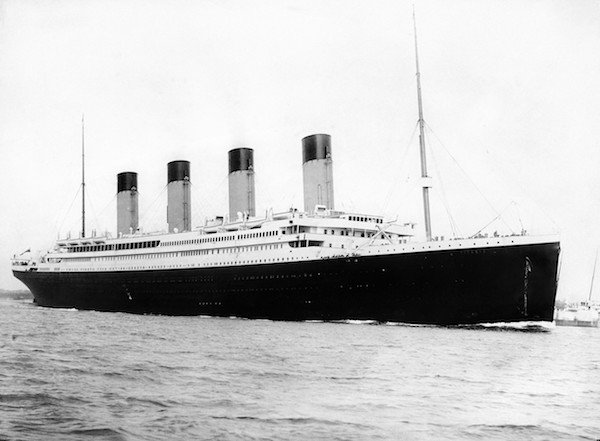 The Titanic actually had enough lifeboats. Enough to meet the requirements, that is. In fact, they had more than they needed. As the story goes, the Titanic stands as a monument to what happens when you have too much confidence. With the watertight compartments and sheer tonnage, they assumed that the ship was unsinkable, and only included 20 lifeboats, and it was this bravado that caused the massive tragedy that the sinking of the Titanic was. Except, there’s a wrinkle in that commonly held belief. According to 1911 standards, the Titanic actually didn’t skimp on their lifeboats at all. According to an outdated maritime law, for a ship of that size, they were only required to have 16, but they actually added 4 more just to be safe. As well, they actually had the capacity to carry up to 64 lifeboats if needed, but they didn’t add the extras for the maiden voyage because they were deemed unnecessary with all the other safety precautions, such as the watertight doors, the wireless and the experienced captain at the helm. As well, the point of lifeboats isn’t to offload the entire capacity of a ship, but to ferry passengers to a different ship, so one one at that time was expected to have enough for everyone to get off the ship at once. Granted, there’s many issues that that standard, and laws were changed shortly after, but that led to ships so overloaded with lifeboats and safety gear that they were grossly overweight and barely had room for passengers. In fact, one ship, the S.S. Eastland, capsized in 1915 due to being top heavy with safety equipment.
The Titanic actually had enough lifeboats. Enough to meet the requirements, that is. In fact, they had more than they needed. As the story goes, the Titanic stands as a monument to what happens when you have too much confidence. With the watertight compartments and sheer tonnage, they assumed that the ship was unsinkable, and only included 20 lifeboats, and it was this bravado that caused the massive tragedy that the sinking of the Titanic was. Except, there’s a wrinkle in that commonly held belief. According to 1911 standards, the Titanic actually didn’t skimp on their lifeboats at all. According to an outdated maritime law, for a ship of that size, they were only required to have 16, but they actually added 4 more just to be safe. As well, they actually had the capacity to carry up to 64 lifeboats if needed, but they didn’t add the extras for the maiden voyage because they were deemed unnecessary with all the other safety precautions, such as the watertight doors, the wireless and the experienced captain at the helm. As well, the point of lifeboats isn’t to offload the entire capacity of a ship, but to ferry passengers to a different ship, so one one at that time was expected to have enough for everyone to get off the ship at once. Granted, there’s many issues that that standard, and laws were changed shortly after, but that led to ships so overloaded with lifeboats and safety gear that they were grossly overweight and barely had room for passengers. In fact, one ship, the S.S. Eastland, capsized in 1915 due to being top heavy with safety equipment. -
2.
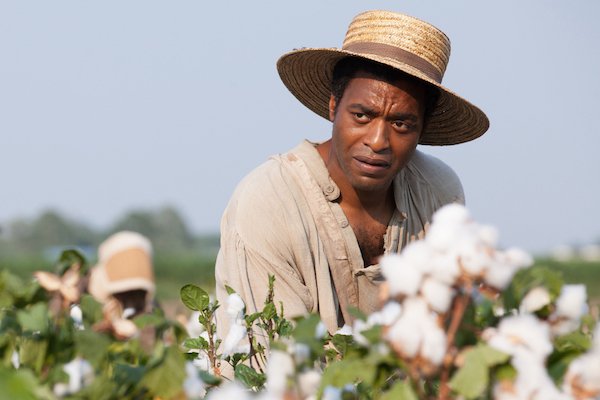 Solomon Northrup Didn’t Get a Happy Ending. If you’re one of the few that hasn’t seen Steve McQueen’s “12 Years a Slave,” go watch it, I’ll wait. The story of Solomon Nothrup, based on his actual memoir, is the story of a free-born African American man who was kidnapped and sold into slavery. After over a decade, he was finally reunited with his family. As the film (and the novel) end, you know that he’s trying to sue the men who kidnapped him and also speaking out against slavery and about his experiences. It also says that his death was mysterious. What the film doesn’t mention is that there was a day he went off to Boston to give a speech, and never came back. No one knows for certain what happened to him, but there’s was a pervasive feeling in that time that freed black men should not be giving speeches or speaking up against the white men who were exercising their right to slaves. There’s no record of him after 1857, and he wasn’t included in the census with his family in 1860. The only evidence of Solomon left is a newspaper account that mentions that Solomon was kidnapped again and sent south, never to be heard from again.
Solomon Northrup Didn’t Get a Happy Ending. If you’re one of the few that hasn’t seen Steve McQueen’s “12 Years a Slave,” go watch it, I’ll wait. The story of Solomon Nothrup, based on his actual memoir, is the story of a free-born African American man who was kidnapped and sold into slavery. After over a decade, he was finally reunited with his family. As the film (and the novel) end, you know that he’s trying to sue the men who kidnapped him and also speaking out against slavery and about his experiences. It also says that his death was mysterious. What the film doesn’t mention is that there was a day he went off to Boston to give a speech, and never came back. No one knows for certain what happened to him, but there’s was a pervasive feeling in that time that freed black men should not be giving speeches or speaking up against the white men who were exercising their right to slaves. There’s no record of him after 1857, and he wasn’t included in the census with his family in 1860. The only evidence of Solomon left is a newspaper account that mentions that Solomon was kidnapped again and sent south, never to be heard from again. -
3.
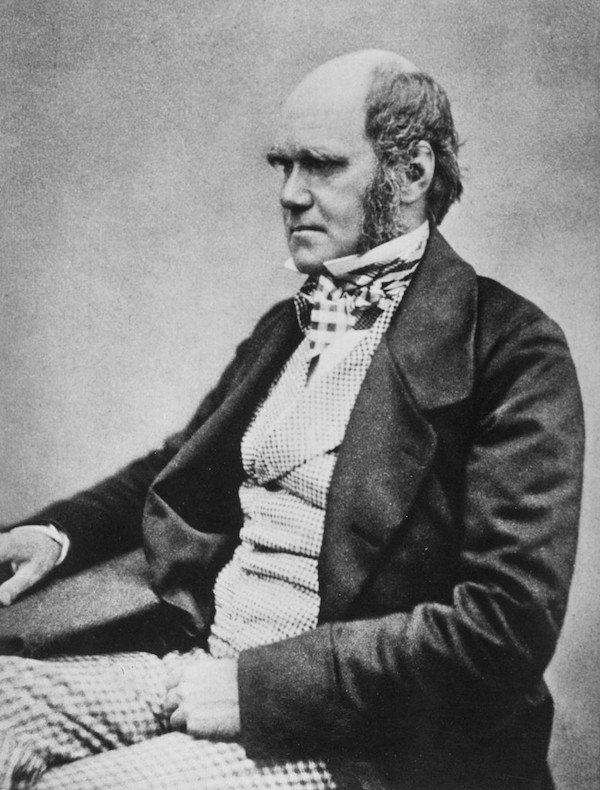 Darwin Tried to Ride the Galapagos Tortoises. History tells us that Darwin’s trip to the Galapagos Islands was where the theory of evolution was born. His work there, cataloging nature and through use of the scientific method to test theories through rigorous and systematic scrutiny, he educated the world on how we evolved from primates. What they leave out, was that he was a bit of a daredevil. According to this Journal article, Darwin wasn’t sure what to make of the Galapagos Tortoise and upon seeing the 600lb beasts, he reportedly tried to ride them by jumping on their back and rapping on their shell to make them go. He kept on falling off, however, so instead, he ate them. Apparently, he and his crew ate their way through a significant number of tortoises and it was only when he returned to England that he realized the importance of the animal in his evolutionary theory. Also, there’s a thought that it was his appetite that brought them to extinction, proving his theory that if they had just let him ride, then he would have valued them as transportation. Since they weren’t viable as something to ride, he ate them. They didn’t adapt to him, so they got endangered.
Darwin Tried to Ride the Galapagos Tortoises. History tells us that Darwin’s trip to the Galapagos Islands was where the theory of evolution was born. His work there, cataloging nature and through use of the scientific method to test theories through rigorous and systematic scrutiny, he educated the world on how we evolved from primates. What they leave out, was that he was a bit of a daredevil. According to this Journal article, Darwin wasn’t sure what to make of the Galapagos Tortoise and upon seeing the 600lb beasts, he reportedly tried to ride them by jumping on their back and rapping on their shell to make them go. He kept on falling off, however, so instead, he ate them. Apparently, he and his crew ate their way through a significant number of tortoises and it was only when he returned to England that he realized the importance of the animal in his evolutionary theory. Also, there’s a thought that it was his appetite that brought them to extinction, proving his theory that if they had just let him ride, then he would have valued them as transportation. Since they weren’t viable as something to ride, he ate them. They didn’t adapt to him, so they got endangered. -
4.
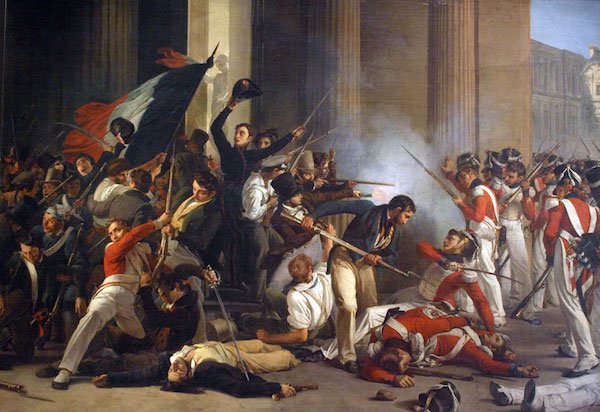 The Heroes of the French Revolution Killed More Peasants than Aristocrats. If you’ve seen the musical Les Miserables, then you know what it’s all about. If not, back in France, the people rose up against the aristocracy in the name of equality, liberty and fraternity. It was an all out street brawl, with the royals becoming subjects to the guillotine, and we see the revolutionaries as heroes, taking down the establishment. Except they killed more of their kin, then their kings. Outside of the major cities of Paris and Versailles, the rest of France was okay with their life. They didn’t want to be a part of the revolution, but when the new republic took over, they started putting their own rules in place, and the peasant populace rebelled against them. So the French Army, under the control of the new government, set out to slaughter all the rebels, trampling them under the feet of their horses. When it was all said and done, more peasants and common French folk lost their lives, than the aristocrats and monarchy.
The Heroes of the French Revolution Killed More Peasants than Aristocrats. If you’ve seen the musical Les Miserables, then you know what it’s all about. If not, back in France, the people rose up against the aristocracy in the name of equality, liberty and fraternity. It was an all out street brawl, with the royals becoming subjects to the guillotine, and we see the revolutionaries as heroes, taking down the establishment. Except they killed more of their kin, then their kings. Outside of the major cities of Paris and Versailles, the rest of France was okay with their life. They didn’t want to be a part of the revolution, but when the new republic took over, they started putting their own rules in place, and the peasant populace rebelled against them. So the French Army, under the control of the new government, set out to slaughter all the rebels, trampling them under the feet of their horses. When it was all said and done, more peasants and common French folk lost their lives, than the aristocrats and monarchy. -
5.
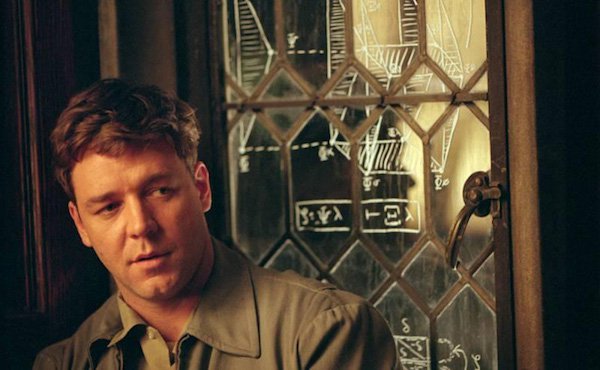 John Nash Spent a lot of Time Off His Meds. An oldie but a goodie, the film “A Beautiful Mind” tells the heart-wrenching story of math genius John Nash’s struggle with mental illness. By the end of the film, he gets a handle on his schizophrenia with the help of his wife and newer meds. Except, the real John Nash didn’t agree with the “newer medications” line. In reality, he handled his schizophrenia in the opposite way, by rejecting his meds, as they blunted his mind. In 1970 he ceased taking his drugs altogether. While Nash isn’t the first individual with a history of mental illness to convince themselves they don’t need medication and function without them, he’s the rare exceptionality where it worked. The filmmakers didn’t want to give the audience the impression that just anyone could go cold turkey and manage their schizophrenia.
John Nash Spent a lot of Time Off His Meds. An oldie but a goodie, the film “A Beautiful Mind” tells the heart-wrenching story of math genius John Nash’s struggle with mental illness. By the end of the film, he gets a handle on his schizophrenia with the help of his wife and newer meds. Except, the real John Nash didn’t agree with the “newer medications” line. In reality, he handled his schizophrenia in the opposite way, by rejecting his meds, as they blunted his mind. In 1970 he ceased taking his drugs altogether. While Nash isn’t the first individual with a history of mental illness to convince themselves they don’t need medication and function without them, he’s the rare exceptionality where it worked. The filmmakers didn’t want to give the audience the impression that just anyone could go cold turkey and manage their schizophrenia. -
6.
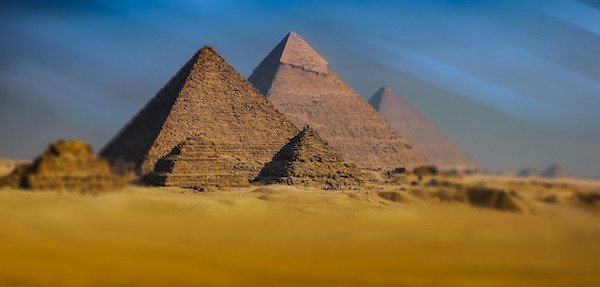 The Guys that Built the Pyramids, were Skilled Craftsman, Not Slaves. Every time you think of how the Great Pyramid of Giza was built, you picture slaves, getting whipped to death, moving blocks into place. These tombs supposedly stand for the struggle that slaves suffered through, for the vanity of one man who needed a building to be buried in after he was gone. Except, it turns out that the pyramids weren’t built by Jewish slaves. Actually, it wasn’t even slaves that built them. Skilled and paid craftsmen, working in three-month shifts, built the pyramids up from the desert floor. They even had health care and death benefits. Archeologists have found tombs of Egyptian construction workers buried inside their pyramids, with jars of bread and beer so they can get drunk and soak it up in the afterlife.
The Guys that Built the Pyramids, were Skilled Craftsman, Not Slaves. Every time you think of how the Great Pyramid of Giza was built, you picture slaves, getting whipped to death, moving blocks into place. These tombs supposedly stand for the struggle that slaves suffered through, for the vanity of one man who needed a building to be buried in after he was gone. Except, it turns out that the pyramids weren’t built by Jewish slaves. Actually, it wasn’t even slaves that built them. Skilled and paid craftsmen, working in three-month shifts, built the pyramids up from the desert floor. They even had health care and death benefits. Archeologists have found tombs of Egyptian construction workers buried inside their pyramids, with jars of bread and beer so they can get drunk and soak it up in the afterlife. -
7.
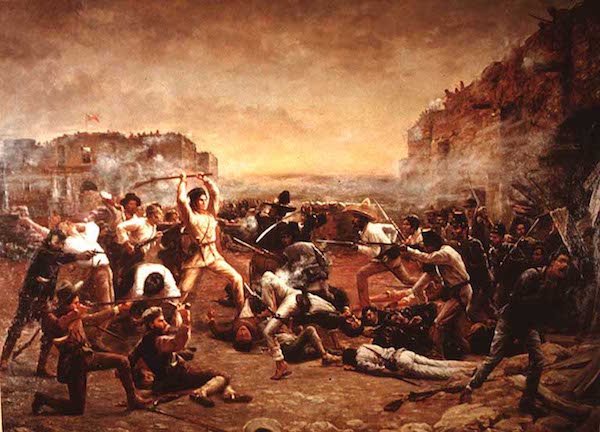 The Battle of the Alamo didn’t need to Happen and Turned Out to be a Mistake. Another one of those great battles in history, the Alamo is the story of brave US soldiers who fought against, and fell to an onslaught of Mexican soldiers, during the Texas Revolution. It’s one of those stories, of bravery against losing odds, for a cause greater than them. Except it didn’t really need to happen. It wasn’t a key strategic location and it was too far from the English speaking and English friendly settlements in Texas. US Army commander Sam Houston tried to do everything to convince the army to focus on the locations, as they didn’t have the ammunition or the manpower to win at the Alamo. He was ignored. This is where history gets a little muddy. On one hand, there’s the massive loss of life for an old mission that wasn’t really worth it. On the other hand, as a piece of propaganda, the Alamo helped. Every Texan (and American) knows “remember the Alamo” as a battle cry, and it was the lynchpin to winning the war, but as a purely symbolic gesture.
The Battle of the Alamo didn’t need to Happen and Turned Out to be a Mistake. Another one of those great battles in history, the Alamo is the story of brave US soldiers who fought against, and fell to an onslaught of Mexican soldiers, during the Texas Revolution. It’s one of those stories, of bravery against losing odds, for a cause greater than them. Except it didn’t really need to happen. It wasn’t a key strategic location and it was too far from the English speaking and English friendly settlements in Texas. US Army commander Sam Houston tried to do everything to convince the army to focus on the locations, as they didn’t have the ammunition or the manpower to win at the Alamo. He was ignored. This is where history gets a little muddy. On one hand, there’s the massive loss of life for an old mission that wasn’t really worth it. On the other hand, as a piece of propaganda, the Alamo helped. Every Texan (and American) knows “remember the Alamo” as a battle cry, and it was the lynchpin to winning the war, but as a purely symbolic gesture. -
8.
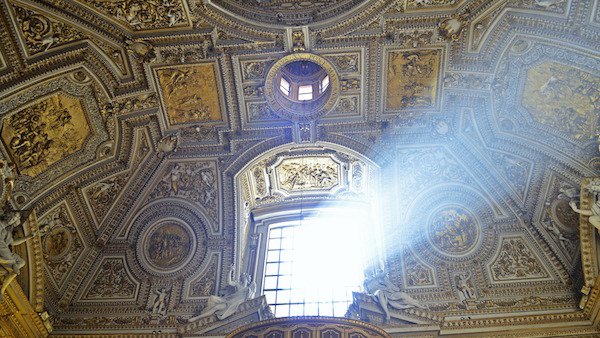 The Catholic Church was a Strong Supporter of Science and Astronomy. There’s this general knowledge that back in the day, the Catholic Church was against anything that disproved the bible. We think that they wanted to halt scientific progress, thought the world was flat and that the sun went around the earth, and God lived just upstairs above the clouds. They even were credited with jailing intellectuals like Galileo. So while they did put him under house arrest for arguing that the earth went around the sun, not the other way around, it’s actually been proven that the Catholic Church, from the Middle Ages to the Age of Enlightenment, was the biggest financial supporter of astronomy in academia. Think about it, cathedrals were the tallest structures around and were built to work as solar observatories, and among the ranks of Catholics in their time, you had Issac Newton as a guy who went to church every sunday and Nicolas Copernicus, who was a cleric. When it comes to other scientific disciplines, Gregor Mendel, the father of genetics was an abbot, while Georges Lemaitre, who proposed the theory that the universe was expanding, was an ordained priest. There’s even Saint Albert Magnus, who was a doctor, an astrologist, alchemist and zoologist, before becoming canonized into a saint. There’s a whole list on wikipedia of church-sanctioned scientists.
The Catholic Church was a Strong Supporter of Science and Astronomy. There’s this general knowledge that back in the day, the Catholic Church was against anything that disproved the bible. We think that they wanted to halt scientific progress, thought the world was flat and that the sun went around the earth, and God lived just upstairs above the clouds. They even were credited with jailing intellectuals like Galileo. So while they did put him under house arrest for arguing that the earth went around the sun, not the other way around, it’s actually been proven that the Catholic Church, from the Middle Ages to the Age of Enlightenment, was the biggest financial supporter of astronomy in academia. Think about it, cathedrals were the tallest structures around and were built to work as solar observatories, and among the ranks of Catholics in their time, you had Issac Newton as a guy who went to church every sunday and Nicolas Copernicus, who was a cleric. When it comes to other scientific disciplines, Gregor Mendel, the father of genetics was an abbot, while Georges Lemaitre, who proposed the theory that the universe was expanding, was an ordained priest. There’s even Saint Albert Magnus, who was a doctor, an astrologist, alchemist and zoologist, before becoming canonized into a saint. There’s a whole list on wikipedia of church-sanctioned scientists. -
9.
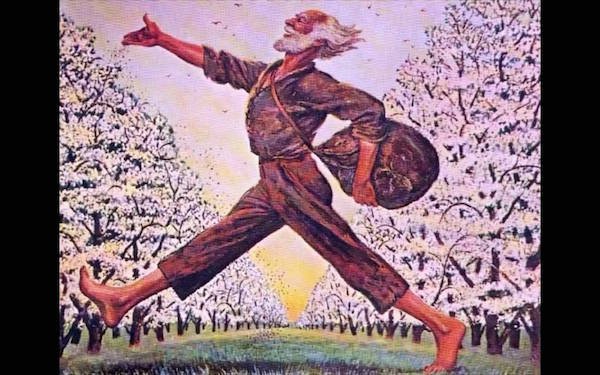 Johnny Appleseed’s Apples Were Completely Inedible. If you grew up in America (and by extension Canada too, as he heard all the stories), then you know of Johnny Appleseed; the US hero who wandered the countryside, planting apple trees and living this idyllic existence. According to legend, the fruits were for all the kids and future Americans, so that they could enjoy a sweet apple and probably make some pie. The truth is, while Johnny Appleseed (real name John Chapman) really existed, the apples he was planting weren’t for eating; they weren’t even for kids. He was planting inedible sour apples for a different kind of treat; hard cider. According to the Smithsonian, Johnny was bringing booze to the American Frontier. Early settlers were hard drinkers and cider was their nectar of choice, so he was out there providing a service, but he didn’t do it for free either. The truth is that he’d run ahead and plant the trees, making an orchard, then sell the land to the settlers so they can start getting tipsy. And probably running crooked too, as legend has that he was pretty lit most of the time. This made him less of a US hero, and more of a liquor baron, who was promoting cheap, homegrown alcoholism that the government couldn’t control. When prohibition came into effect, the FBI actually tried tracking down all of his trees and chopping them down.
Johnny Appleseed’s Apples Were Completely Inedible. If you grew up in America (and by extension Canada too, as he heard all the stories), then you know of Johnny Appleseed; the US hero who wandered the countryside, planting apple trees and living this idyllic existence. According to legend, the fruits were for all the kids and future Americans, so that they could enjoy a sweet apple and probably make some pie. The truth is, while Johnny Appleseed (real name John Chapman) really existed, the apples he was planting weren’t for eating; they weren’t even for kids. He was planting inedible sour apples for a different kind of treat; hard cider. According to the Smithsonian, Johnny was bringing booze to the American Frontier. Early settlers were hard drinkers and cider was their nectar of choice, so he was out there providing a service, but he didn’t do it for free either. The truth is that he’d run ahead and plant the trees, making an orchard, then sell the land to the settlers so they can start getting tipsy. And probably running crooked too, as legend has that he was pretty lit most of the time. This made him less of a US hero, and more of a liquor baron, who was promoting cheap, homegrown alcoholism that the government couldn’t control. When prohibition came into effect, the FBI actually tried tracking down all of his trees and chopping them down.
- REPLAY GALLERY
-

- History changes once you know these overlooked details
- NEXT GALLERY
-

- ULOOK2's Turkey day Pic Dump!
The Titanic actually had enough lifeboats. Enough to meet the requirements, that is. In fact, they had more than they needed. As the story goes, the Titanic stands as a monument to what happens when you have too much confidence. With the watertight compartments and sheer tonnage, they assumed that the ship was unsinkable, and only included 20 lifeboats, and it was this bravado that caused the massive tragedy that the sinking of the Titanic was. Except, there’s a wrinkle in that commonly held belief. According to 1911 standards, the Titanic actually didn’t skimp on their lifeboats at all. According to an outdated maritime law, for a ship of that size, they were only required to have 16, but they actually added 4 more just to be safe. As well, they actually had the capacity to carry up to 64 lifeboats if needed, but they didn’t add the extras for the maiden voyage because they were deemed unnecessary with all the other safety precautions, such as the watertight doors, the wireless and the experienced captain at the helm. As well, the point of lifeboats isn’t to offload the entire capacity of a ship, but to ferry passengers to a different ship, so one one at that time was expected to have enough for everyone to get off the ship at once. Granted, there’s many issues that that standard, and laws were changed shortly after, but that led to ships so overloaded with lifeboats and safety gear that they were grossly overweight and barely had room for passengers. In fact, one ship, the S.S. Eastland, capsized in 1915 due to being top heavy with safety equipment.
9/9
1/9
Categories:
Wow


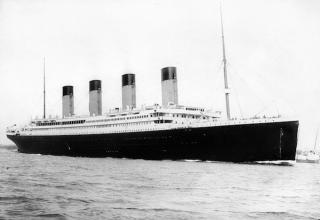
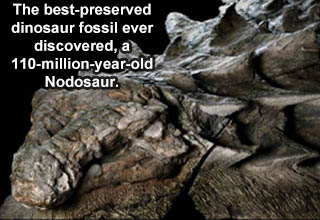
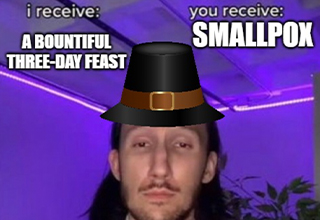




3 Comments